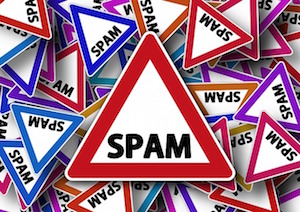 Holding your own event is a great way to meet new people and allow them to sample your business in a low-risk setting. A face-to-face event allows you to build trust quicker than many other marketing methods, and trust is almost always required before a sale can be made.
Holding your own event is a great way to meet new people and allow them to sample your business in a low-risk setting. A face-to-face event allows you to build trust quicker than many other marketing methods, and trust is almost always required before a sale can be made.
Types of Events
Some of the more popular types of events you can hold include:
- A seminar or class
- An open house
- A neighborhood sale
- A networking meeting
- A reception or party or celebration or festival
- A conference
If you’re new to holding events, start small and/or join with another business so that you’ll have a larger number of people to invite.
Participants
Once you’ve decided on the type of event you want to hold, you’ll want to determine who you will invite. Will it be clients only? Will you join with other businesses and combine your lists? You’ll want to invite a larger number of people than you might think. If the event is free, there may be several no-shows, even if they have RSVP’d. The more formal the event, the fewer the no-shows.
Topic or Purpose
For the best turnout, choose a topic that’s interesting to your clients as well as relevant to the services you offer. Provide education that the customer needs, a new money-making strategy, a new product or service roll-out, or something that will affect your customers’ well-being, and you’ll experience the best turnout.
Spread the Word
Now that you’re ready to hold your event, it’s time to get the word out. Plan on sending multiple emails (more than you might be comfortable with) to let people know about your event. Email is a good way to notify people, but if you have the budget, mail invitations. Call the most important people and let them know you want them at your event.
Have Fun and Make Money
Be sure to have a high ratio of staff to guests so that more than one of your staff can meet each person. Enjoy your event, and hopefully, you’ll be able to get to know many future customers there as well.
 Some numbers need reviewing on a daily basis, and one example of this is cash. When cash is coming in from a number of places, it’s great to have a daily summary of what was collected.
Some numbers need reviewing on a daily basis, and one example of this is cash. When cash is coming in from a number of places, it’s great to have a daily summary of what was collected. Have you ever been in a situation where there’s no internet and you needed it? Or perhaps you’re at a hotel and don’t want to pay the extra $15 per day for wireless internet. If so, you’re not alone, and luckily, there’s a gadget for just about everything. This time, it’s a gadget you probably already have: all you need to do is whip out your cell phone.
Have you ever been in a situation where there’s no internet and you needed it? Or perhaps you’re at a hotel and don’t want to pay the extra $15 per day for wireless internet. If so, you’re not alone, and luckily, there’s a gadget for just about everything. This time, it’s a gadget you probably already have: all you need to do is whip out your cell phone. Sales tax laws are constantly changing, and sales tax audits have increased since states and local agencies have become creative about finding new ways to generate revenues. If you haven’t made any changes in your sales tax procedures in a while, you are probably at risk.
Sales tax laws are constantly changing, and sales tax audits have increased since states and local agencies have become creative about finding new ways to generate revenues. If you haven’t made any changes in your sales tax procedures in a while, you are probably at risk. Unfortunately, spam is an inevitable part of today’s digital world. The bad news is if you have your spam settings set too tightly, you will lose good emails. If you receive new prospects via email, you may miss out on good clients and revenue. If you have your settings too loose, you have to take up extra time to wade through the spam emails.
Unfortunately, spam is an inevitable part of today’s digital world. The bad news is if you have your spam settings set too tightly, you will lose good emails. If you receive new prospects via email, you may miss out on good clients and revenue. If you have your settings too loose, you have to take up extra time to wade through the spam emails. Wow, can you believe that 2015 is half over already? Now that we’ve crossed the halfway mark, it’s time to see if we’re on track for our 2015 goals. To do that, we need to see if we’ve met our mid-year milestones.
Wow, can you believe that 2015 is half over already? Now that we’ve crossed the halfway mark, it’s time to see if we’re on track for our 2015 goals. To do that, we need to see if we’ve met our mid-year milestones. If you have a business where you have to send documents of any kind to your customers, then you may benefit from a portal. You can save time on customer service and possibly postage and labor. You will also look most professional while increasing service delivery.
If you have a business where you have to send documents of any kind to your customers, then you may benefit from a portal. You can save time on customer service and possibly postage and labor. You will also look most professional while increasing service delivery. If you need cash fast, there’s nothing like having a sale to increase your bank account quickly. Here are ten excuses you can use to tell your customers you’re having a sale.
If you need cash fast, there’s nothing like having a sale to increase your bank account quickly. Here are ten excuses you can use to tell your customers you’re having a sale. Do you have employees who need to work together as a team? Or perhaps you need to work as a team with your customers and vendors. When people of different backgrounds get together for a common goal, there are often four stages they go through before they become a true team or family.
Do you have employees who need to work together as a team? Or perhaps you need to work as a team with your customers and vendors. When people of different backgrounds get together for a common goal, there are often four stages they go through before they become a true team or family. A great way to speed up your cash flow is to get paid faster by customers who owe you money. One way to do that is to examine your payment terms to see if you can accelerate them. First let’s talk about what payment terms are common. Then I’ll share a study that showed which payment terms generate the fastest payments.
A great way to speed up your cash flow is to get paid faster by customers who owe you money. One way to do that is to examine your payment terms to see if you can accelerate them. First let’s talk about what payment terms are common. Then I’ll share a study that showed which payment terms generate the fastest payments.

.jpg)



